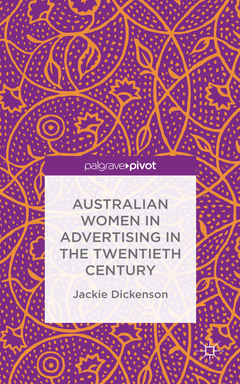Description
Australian Women in Advertising in the Twentieth Century, 1st ed. 2015
Author: Dickenson J.
Language: English
Subjects for Australian Women in Advertising in the Twentieth Century:
Keywords
Advertising; Australia; consumer culture; gender history; 20th century; culture; empire; industry; twentieth century; women
Approximative price 58.01 €
In Print (Delivery period: 15 days).
Add to cart144 p. · 14x21.6 cm · Hardback
Description
/li>Contents
/li>Biography
/li>
When did Australian women first enter the advertising industry? The stereotypical advertising executive might be a pony-tailed, Ferrari-driving, young-ish man, but women have worked in Australian advertising agencies from the first years of the modern industry, and today they comprise half of the industry's workforce. Australian Women in Advertising in the Twentieth Century rescues these women from their obscurity. By employing a broader definition of advertising than usual, this study reveals the important role women have played in the development of the Australian advertising industry, sheds light on women's struggle to reach the higher echelons of the industry, and considers why the popular image of the advertising executive is at such variance from the reality. The experiences of these remarkable women across a century of Australian advertising provide valuable information on the role of gender in the development of this ubiquitous industry, as well as the encroachment of consumer culture.
1. Advertising: A Suitable Career?
2. Educating Shoppers in the 1920s
3. Elma Kelly's Empire: An Australian in Asia
4. Looking Out To The World
5. The Girls Who Made It
6. Advertising and Beyond
7. Women Experts and Consumer Culture
8. Selling Fashion after World War Two
9. Bold Invaders: The Impact of the Women's Movement
Conclusion




